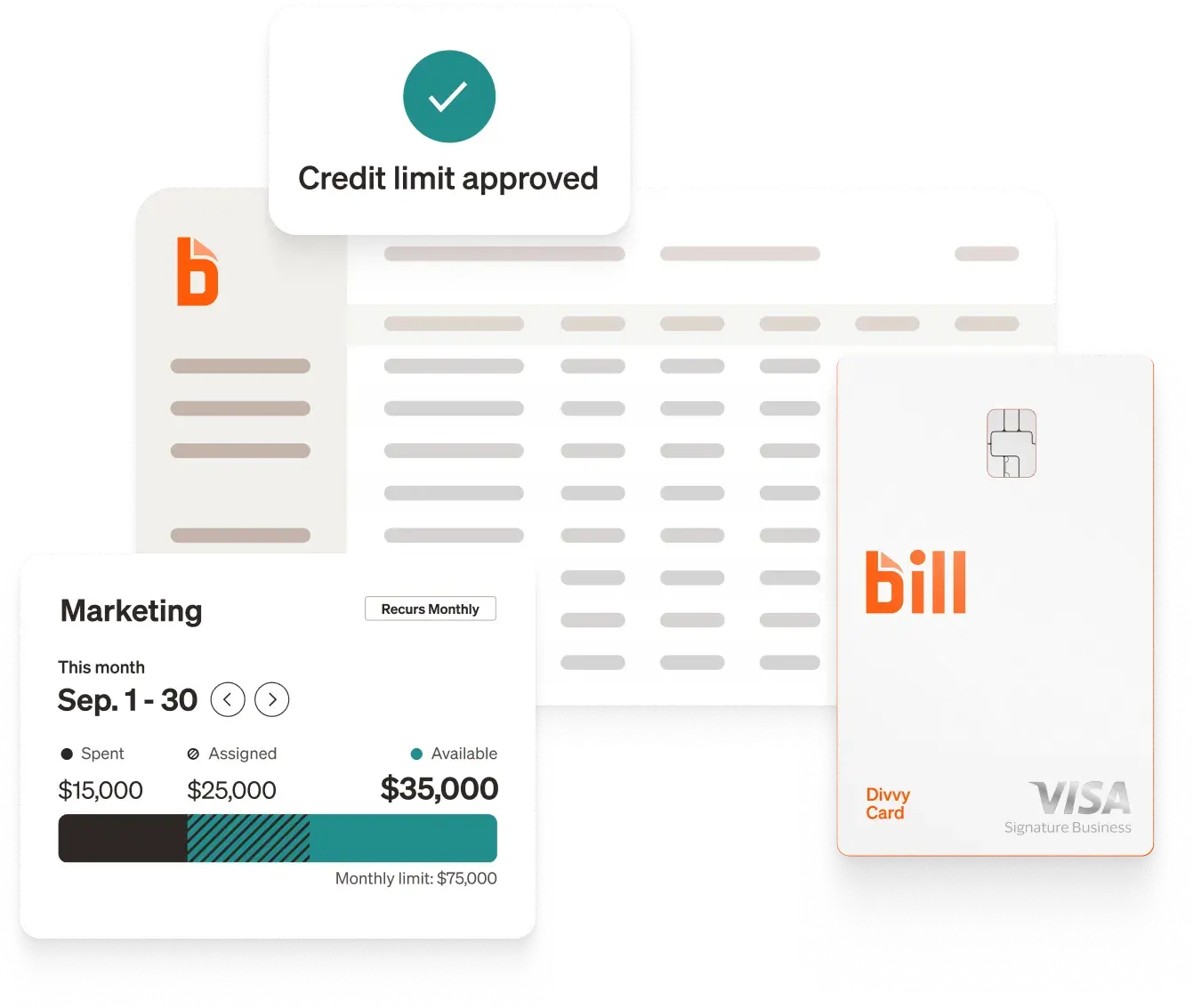
July 1, 2025
Every American city relies on one thing: the success of small and midsize businesses (SMBs). Growing businesses build communities. SMBs bring investment, create jobs, and unlock opportunity. The health of these businesses serves as a barometer of the health of our overall economy.
BILL is the intelligent financial operations platform that powers nearly 500,000 SMBs and operates a network of more than 7 million members that have made or received a payment. Approximately 1% of US GDP is processed through BILL’s integrated platform products: accounts payable/accounts receivable, spend and expense, procurement, forecasting, and more.
One of the reasons BILL is a category leader is that we serve businesses in large, midsize, and small cities. Given the scale of our platform, we are uniquely positioned to analyze business activity in real time across local and national levels, industries, and SMBs of all sizes. We see a broad cross-section of economic activity across the US.
We have run an analysis of accounts payable spending, or business-to-business (B2B) payments, sent by SMBs of 2 to 200 employees from the largest 342 US cities with a population of 100,000 or more. This data helps us to better understand the effects of recent changes on America’s large and midsize cities, including population migration and new business creation shifting to midsize cities. This is timely given new federal policies this year, a dynamic trade environment, and the social and economic legacies of COVID-19.
In this report, we provide key findings, in-depth analysis, charts of payments by city, and a methodology. BILL will continue to report on the impact of policies and economic developments on the SMB economy.

Section 1: The rise of the midsize city
Over the last five years, since COVID-19 struck, most of America’s large and midsize cities have shown strong payments growth. But payments growth from midsize cities has far outpaced payments growth from large cities. Even in the period since new tariffs were introduced, beginning in Feb 2025, payments growth from midsize cities has outpaced that from large cities.
Why are midsize cities outperforming large cities? First, average payments growth per company from midsize cities has been twice as fast as that of large cities. Since COVID-19, payments growth from midsize cities has increased by 200%, compared to growth from large cities of 113% (chart 1).

Second, the gap between payments growth from midsize cities compared to that from large cities has widened since the introduction of tariffs. This implies resilience of SMBs that are sending payments from midsize cities. Since May 2024, payments growth per company from midsize cities has outpaced growth from large cities by 2.9 times. Payments growth from midsize cities was 32%, compared to large cities at 11% (chart 2).

Since tariffs were introduced, the gap between midsize and large cities has remained at 2.9 times. Payments growth from midsize cities grew 5.5% compared to payments growth from large cities, which grew by 1.9% (chart 3).

Third, the list of the fastest-growing midsize cities has changed noticeably since tariffs were introduced. This suggests that it is not specific midsize cities that are replacing large cities, but that as a group, midsize cities, largely dispersed across the country, are attracting a larger number of SMBs.
Only 10 of the 25 fastest-growing cities in May 2025, compared to Jan 2025, were on the list of the 25 fastest-growing cities when comparing May 2025 to a year earlier. In other words, more than half of the cities that were growing the fastest over the past year are no longer leading the pack.
Of the 50 largest cities by population, none make the list of the fastest-growing cities in May 2025 compared to the same month of the previous year. This year, the fastest-growing payments were from the following cities, all midsize: Mesquite, Texas; El Monte, California; South Fulton, Georgia; Quincy, Massachusetts; and Broken Arrow, Oklahoma.
Section 2: Where growth is happening and why
A drift to the South
Two regions have seen the fastest growth in payments by city: the South and the West. The South takes the lion’s share of the 25 fastest-growing cities, driven by the South Atlantic and West South Central divisions. These two regions have consistently led the way in payments growth since COVID-19, and most of this growth has occurred in midsize cities.
When the pandemic hit, many Americans began leaving the country’s largest cities, especially Los Angeles, New York, and Chicago. According to US Census Bureau and postal code data from location intelligence firm Melissa, this shift led to major population changes across the country. By 2022, the South had become the top destination, drawing 2 million people from other regions—more than any other part of the country. The West was the second most popular, attracting 957,000 people. Meanwhile, the Midwest experienced the greatest population loss of any region, with nearly 100,000 people leaving.
This trend wasn’t limited to domestic moves. Of the 2.1 million people who moved to the US from other countries in 2022, 904,000 settled in the South, while 534,000 moved to the West.
BILL payments data show the following for the 25 fastest-growing cities in each period:
- Since COVID-19 (Mar 2020), 6 of the 25 fastest-growing cities were in Texas; 5 were in California; 11 were in the South; 6 were in the West; and 5 in the Midwest. None of these cities was large.
- Since May 2024, 5 of the 25 fastest-growing cities were in California, 4 were in Texas, 2 were in Florida, and 2 were in Georgia. A total of 13 were in the South. None of the cities was large.
- Since tariffs were levied in Feb 2025, 8 of the 25 fastest-growing cities were in California, 13 were in the South, and 9 were in the West. Only 1 of the 25 was large: San Jose, California.
See charts 4-7.
The general trend is clear. There has been an exodus from large cities in California, New York, and Illinois, into the South and West, and particularly to midsize cities in Florida, Texas, and California.




Why are midsize cities so attractive?
A combination of factors has driven SMBs and consumers out of large cities and into midsize cities. Growing populations breed higher payment volumes as businesses send payments to their vendors.
Several factors are driving the increase in payments from midsize cities. Many offer a nicer climate that attracts both residents and businesses. Others are seeing strong sector-specific growth that attracts skilled workers. Business-friendly local governments, better public services, safer neighborhoods, and stronger schools and infrastructure all contribute to their appeal. On top of that, a lower overall cost of living, including more affordable housing, makes midsize cities an increasingly attractive option for growing businesses.
Longer term, the retirement of the baby boomer generation has contributed to the migration of Americans from large to midsize cities. As baby boomers, born between 1946 and 1964, retire, they are departing large cities such as New York, Los Angeles, and Chicago for midsize cities like Beaumont, Texas; Broken Arrow, Oklahoma; and Pompano Beach, Florida.
Contributing to this exodus is the widespread adoption of working from home. This trend has partially reversed over the last two years. As long as employees do not need to be physically present in offices, they are free to work remotely from smaller cities.
The freedom of working from home has given rise to yet another factor–the structural increase in entrepreneurship. Since Mar 2020, SMBs have created new businesses at a rate 75% higher than in the decade prior to the pandemic. Many of these firms were established in midsize cities.
Section 3: Which sectors are driving growth?
SMB payments from midsize cities show resilience in the broad-based sources of growth by industry, and in the pace of growth of these industries. Charts 8-10 give an idea of the strength and variety of this growth.
Driving payments growth in the 10 fastest-growing midsize cities were the following industries:
- Since new tariffs were levied in Feb 2025: Information, construction, educational services, and professional, scientific, and technical
- Over the last year (since May 2024): Administrative and support + waste management and remediation services; manufacturing; and other services
- Since the outbreak of COVID-19 (since Mar 2020): Professional, scientific, and technical services; agriculture, forestry, fishing, and hunting; manufacturing; wholesale trade; and healthcare and social assistance



Conclusion & takeaways
BILL payments data show us what we know intuitively to be true: that SMBs are resilient. The data also show us that SMBs continue to be an engine of economic activity across the country, especially in midsize cities.
SMB payments growth has followed the migration of people to midsize cities. The COVID-19 pandemic led to the rise in working from home, an increase in the digitalization of many services, and a boom in the creation of new SMBs. After all, many midsize cities have a lot to offer–pleasant weather, parks and nature preserves, a lower cost of living, a business-friendly environment, safety, good schools, and more space. The rise of the midsize city has offered opportunities to SMBs to thrive across multiple sectors of the economy.
An uncertain and dynamic operating environment for businesses of all sizes will continue to shape economic trends across the country in varying ways. But what is clear is that we are well and truly in the era of the midsize city. BILL will continue to monitor these trends.
Methodology
BILL has aggregated and anonymized payment data that flows across its platform, applying the following criteria:
Payments
BILL Accounts Payable total payment volume (TPV) by city or payments that payers have sent from US cities.
Payments are taken from the largest 342 cities by population across the 50 US states, the District of Columbia, and 7 territories. In addition to payments from US cities, we analyze payments from US divisions and regions, as defined by the US Census Bureau.
To smooth out the series, we applied percentage changes of 3-month moving averages in monthly TPV per organization over the following time periods:
- Since COVID-19 began: May 2025 vs Mar 2020
- Over the last year: May 2025 vs May 2024
- Since tariffs were levied: May 2025 vs Jan 2025. (The Trump administration first announced tariffs on Feb 1, 2025.)
Customer segment
We define organizations, firms, or companies as US businesses of 2-200 employees. We exclude BILL organizations from its financial institutions channel.
Filter cities where BILL data is representative
To ensure that BILL payments data is representative of economic activity, we filtered our sample of cities by US Bureau of Labor Statistics (BLS) data on population to identify the basket of cities where BILL data is most representative of economic activity. Where populations are high, there are jobs and economic activity. We have therefore excluded TPV in cities with low populations.
Specifically, we exclude small cities (populations of less than 100,000). We include only large cities (500,000+ populations) and midsize cities (100,000 to 499,999 populations). These are BILL definitions of city size, which consolidate the US Census Bureau definitions.
Additional data



Payments growth among 150 biggest cities (by population)
While smaller than the sample size we use in this report, this data provides a snapshot of payment growth rates across the 150 biggest cities by population.


.jpeg)






